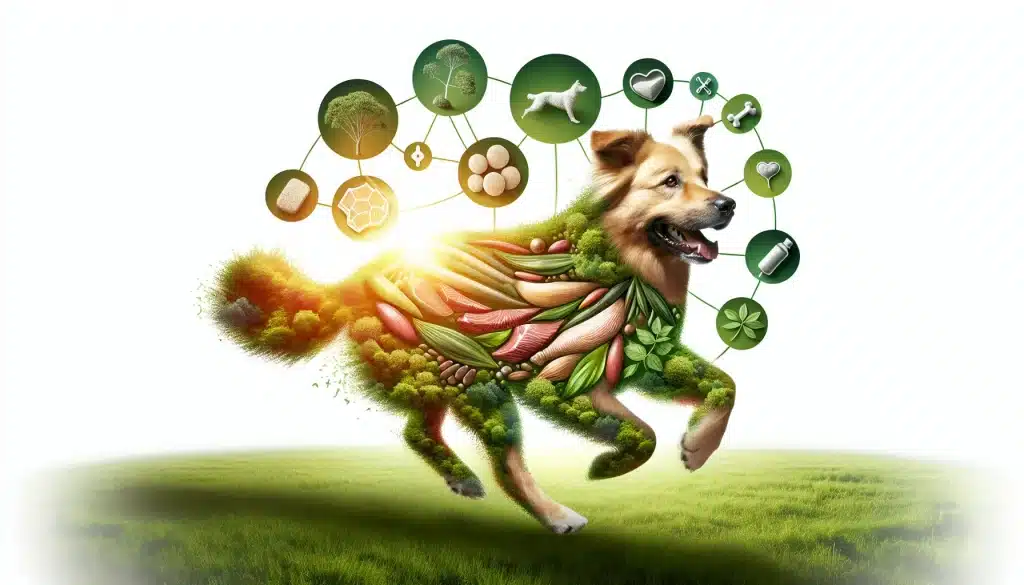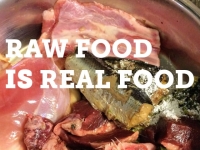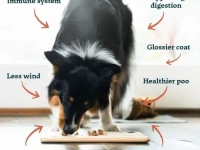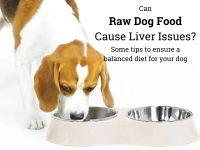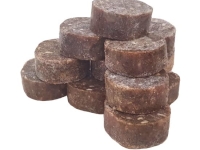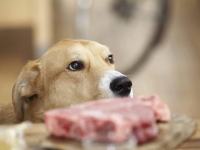Can I Feed My Dog Raw Meat from the Supermarket? Unpacking Safety and Nutrition
In This Article...
THE OVERVIEW...
The notion of feeding dogs raw meat has captured the imagination of many pet owners, fueled by anecdotes of glossy coats and boundless energy. Yet, the question lingers: is supermarket meat a safe choice for your furry companion? Here is how you might manage that the potential risks and rewards of raw diets, and the best practices to ensure your dog thrives.
Understanding Your Dog’s Nutritional Needs
The Basics of Canine Nutrition
Dogs require a balanced diet rich in essential nutrients. Proteins, fats, carbohydrates, vitamins, and minerals form the backbone of their dietary needs. Each life stage—puppy, adult, and senior—demands a tailored approach to nutrition, ensuring optimal health and longevity.
The Role of Protein in a Dog’s Diet
Protein serves as the cornerstone of canine diets. It fuels growth, maintains muscle mass, and supports overall health. The quantity of protein needed varies by age and activity level, so understanding your dog’s specific requirements is fundamental.
The Raw Meat Debate: Is It Safe?
Potential Risks of Feeding Raw Meat from Supermarkets
- Bacterial Contamination: Raw meat can harbour harmful bacteria like Salmonella and E. coli, posing serious health risks to dogs and humans alike.
- Nutritional Deficiencies: Randomly selected meats may lack vital nutrients, leading to imbalances that can affect your dog’s health.
- Parasites: Uncooked meat can carry parasites, which can cause gastrointestinal distress and other health issues.
Benefits of Raw Meat Diets
Proponents of raw diets highlight several benefits, such as improved coat condition, enhanced energy levels, and better digestion. These claims stem from the idea that a raw diet more closely resembles what canines would consume in the wild, promoting natural health.
Types of Raw Meat Safe for Dogs
Recommended Raw Meat Options
Not all meats are created equal. Opt for high-quality sources, including:
- Poultry: Chicken, turkey, and duck are generally safe choices.
- Red Meats: Beef, lamb, and venison offer robust protein options.
- Fish: Salmon and sardines are nutritious, but avoid large fish types like swordfish and tuna due to mercury content.
Meats to Avoid
While it is definitely very tempting to feed your dog tidbits from the table, processed meats, such as sausages, ham, and bacon, should be strictly off the menu. These options often contain additives and preservatives that can harm your dog’s health.
How to Create a Balanced Raw Diet
Consulting with Professionals
Before transitioning to a raw diet, consulting a veterinarian or a certified pet nutritionist is wise. They can tailor a plan that meets your dog’s unique needs, ensuring nutritional adequacy.
Essential Components of a Balanced Raw Diet
A balanced raw diet combines proteins with fruits and vegetables. Supplements, such as omega-3 fatty acids, vitamins, and minerals, may also be necessary to fill any gaps.
Sample Balanced Raw Diet Plan
- Puppies: A mix of ground chicken or lamb, include some finely chopped vegetables, and fish oil or omega 3 supplement.
- Adult Dogs: A combination of protein (rabbit, venison, lamb, chicken), organ meat and bones, sweet potatoes, and leafy greens.
- Senior Dogs: Lean meats paired with low-calorie vegetables to maintain healthy weight.
- Bones:These should be a regular part of your dog’s nutrition plan, not only for dental hygiene but also mental wellbeing. Ensure that they are size appropriate and that you always keep an eye on your dog while it is eating them.
Safe Handling and Preparation of Raw Meat
Best Practices for Handling Raw Meat
Hygiene is paramount. Always clean surfaces and utensils thoroughly to prevent cross-contamination. Store raw meat in a dedicated area of your fridge and ensure it is kept at safe temperatures.
Preparing Raw Meals for Your Dog
When preparing raw meals, use appropriate tools. Consider investing in a dedicated chopping board and knives to avoid mixing raw meat with other food items. Understand the differences between cooking and raw feeding, and choose a method that aligns with your nutritional goals.
FAQ
What are the risks of feeding my dog raw meat from the supermarket?
Feeding raw meat can lead to nutritional deficiencies if not approached carefully.
How can I ensure my dog gets a balanced diet if I choose to feed raw meat?
Work with an holistic veterinarian or nutritionist to devise a balanced diet that includes a variety of proteins, organ meat, bones, fruits, and vegetables.
What types of raw meat are safe for my dog to eat?
Safe options include high-quality raw chicken, beef, lamb, and certain fish. Avoid those known for high mercury levels and highly processed meats like ham and bacon.
Final Thoughts on Raw Feeding
Deciding to feed your dog raw meat from the supermarket requires careful consideration of safety and nutrition. Randomly selecting meat cuts can lead to imbalances that may harm your dog. A well-rounded diet, tailored to your pet’s needs, is paramount for their health.
For those looking to explore raw feeding further, Kuri offers insights on the advantages of raw versus kibble. You might also check out Kuri’s range of raw dog food for a balanced and safe option.
Join the Conversation
What’s your experience with raw feeding? Have questions or insights to share? Leave a comment below!
For more information on ensuring your dog’s diet is as healthy as possible, explore resources on canine nutrition and join a community of informed pet owners.


